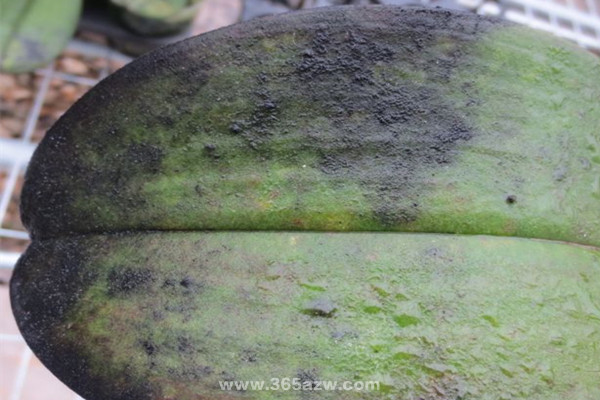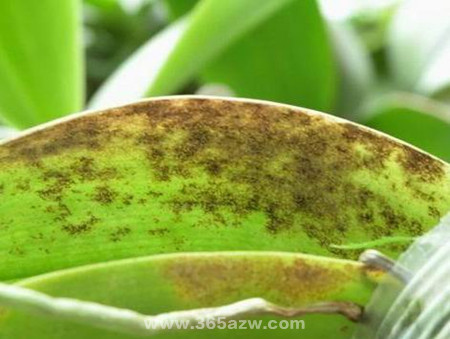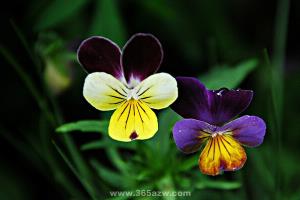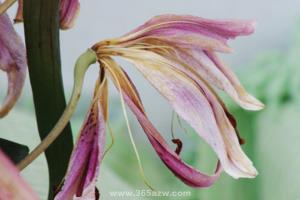Common diseases and control of Phalaenopsis
Phalaenopsis is one of the most ornamental flowers in Orchidaceae, which is loved by the public. In the process of cultivating Phalaenopsis, the prevention and control of diseases and insect pests is undoubtedly a very key link, the following talk about Phalaenopsis has written about common diseases and control methods.

Common diseases and control of Phalaenopsis
Anthrax
Pathogeny
It is not well ventilated in a warm and humid growing environment.
Disease symptoms
Leaves are the most vulnerable to harm, the initial leaf tip and leaf edge will appear small yellow spots, gradually become round or irregular yellow-brown or black-brown spots, later spots into patches and black spots on it.
Prevention and cure
First of all, adequate ventilation and light transmission should be carried out, and then the management of water and fertilizer should be strengthened. the application of nitrogen fertilizer should not be too much, and the application of appropriate amount of zinc fertilizer can increase the thickness of leaves and improve disease resistance. to prevent this disease, the same amount of Bordeaux solution, 65% concentration of mancozeb and 75% concentration of chlorothalonil can be sprayed once every 7-10 days, three times. If the disease has occurred, spray anthrax 800 times, carbendazim 50% times and Shibao Gong 1000 times, once every 7-10 days, 2-3 times.
Grey mold disease
Pathogeny
It is easy to grow in a humid environment where the temperature is too low.
Disease symptoms
Flowers are the most vulnerable. At the beginning of the disease, waterlogged spots appear on petals and sepals, and then slowly form (dark) brown round patches, and in severe cases, the whole flower will wither, greatly reducing the ornamental value of Phalaenopsis.
Prevention and cure

Also need good ventilation and light transmission, at this time to maintain a relatively dry growth environment. Diseased flowers should be removed immediately, otherwise the disease will be contagious. The control can be sprayed with 65%-fold solution of Dysen zinc wettable powder, 1500-fold solution of 50%-fold Sukeling wettable powder and 3%-fold solution of Doc bacteria, once every ten days and 2-3 times.
Soft rot
Pathogeny
The long-term effect of hot and humid weather.
Disease symptoms
At the beginning of the disease, there are transparent, water-soaked spots on the leaves, and in the later stage, the small spots will expand into brown spots to make the leaves rot and produce a stench. The disease spreads quickly and does great harm. If the disease is serious, the basal stem will rot and the plant will die in a short time.
Prevention and cure
The first step is to control moisture and stop spraying water can effectively cut off the transmission of the disease; at the beginning of the disease, 1000 times of agricultural streptomycin of 72% concentration, 80 times of polyantimycin of 10% concentration, 800 times of wettable powder of 50% concentration and 4000 times of neophytomycin can be sprayed every ten days for 2-3 times in a row.
Brown spot disease
Pathogeny
It is easy to be affected by high temperature and humid season, especially in typhoon or rainstorm.
Disease symptoms
At the beginning of the disease, the light brown water-immersed spots gradually become brown or black (oval) round irregular spots, the yellow halo can be seen around, the disease is easy to aggravate, and do great harm to the survival of the seedlings. the leaves of the old plants with serious disease will appear dry or yellowing, and then all will fall.
Prevention and cure
The control measures of this disease can refer to soft rot.
White silk disease
Pathogeny
The plum rain season is the high incidence period of the disease, and it is also easy to occur in other hot and humid weather.
Disease symptoms
At the beginning of the disease, there are yellow-brown water-like spots on the rhizome, and then expand into brown spots. Affected by high humidity, white silky hyphae and mouse dung-like sclerotia appear, resulting in the final death of the diseased plant.
Prevention and cure
First of all, ventilation measures are in place, do not make the potted flowers and plants too dense. Spray 1000-fold solution of 50% concentration of Fodonine or 2000-fold solution of 75% concentration of metoprolol for control, once a week for 3-5 weeks.
Related
- Wuhan Hospital Iron Tree Blooming Result Was Instantly Frightened by the Gardener Master
- Which variety of camellia is the most fragrant and best? Which one do you like best?
- What is the small blue coat, the breeding methods and matters needing attention of the succulent plant
- Dormancy time and maintenance management of succulent plants during dormancy
- Minas succulent how to raise, Minas succulent plant pictures
- What are the varieties of winter succulent plants
- How to raise succulent plants in twelve rolls? let's take a look at some experience of breeding twelve rolls.
- Attention should be paid to water control for succulent plants during dormant period (winter and summer)
- Watering experience of twelve rolls of succulent plants
- Techniques for fertilizing succulent plants. An article will let you know how to fertilize succulent plants.



